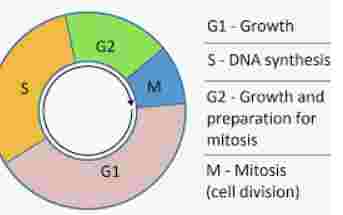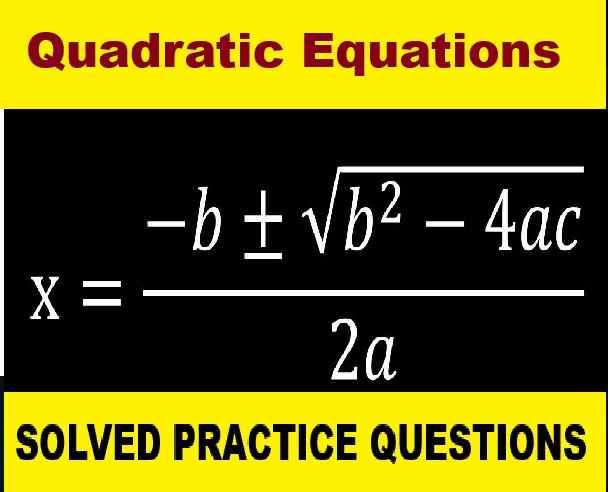Cell Cycle, Cell Division Goyal Brothers Prakashan ICSE Class-10 Biology Solutions Ch-2 Long and Structured questions Part-A . We Provide Solutions of Long Answer Type Questions and Structured Questions of Exercise-2 Part-A Cell Cycle, Cell Division and Structure of Chromosomes. Visit official Website CISCE for detail information about ICSE Board Class-10 Biology

Cell Cycle, Cell Division Goyal Brothers Prakashan ICSE Class-10 Biology Solutions Ch-2 Part-A
| Board | ICSE |
| Publications | Goyal Brothers publications |
| Subject | Biology |
| Class | 10th |
| writer | Dr. K.K. Aggrawal |
| Chapter-2 | Cell Cycle, Cell Division and Structure of Chromosomes |
| Topics | Solutions of Long and Structured questions Part-A |
| Edition | 2022-2023 |
Note :- Before Viewing Goyal Brothers Solutions of Chapter-2 Cell Cycle, Cell Division and Structure of Chromosomes. Read the whole chapter carefully with figure. Make a self written notes including Phases of Mitosis
Question 1: Give the reasons
(i) Gametes have a haploid number of chromosomes.
(ii) Lysosomes are termed suicidal bags of a cell.
Answer :
(i) Gametes are produced as a result of meiosis during which the chromosome number is reduced to half and each daughter cell receives half the set of chromosomes. Therefore, gametes have a haploid number of chromosomes
(ii) Lysosomes are known as suicide bags of the cell because they contain lytic enzymes capable of digesting cells and unwanted materials. autolysis and burst open when the cell is damaged. This causes the hydrolytic enzymes to be released. The released enzymes then digest their own cell, causing the cell to die
Question 2:
(i) Draw a diagram of the nucleus of a cell, having chromosome number 6, as it would appear in the Metaphase stage of mitosis and label the following parts in the diagram; (1) Aster (2) Achromatic spindle (3) Chromatid (4) Centromere.
Answer :

(ii) Mention the difference between mitosis and meiosis with reference to:
(1) Number of daughter cells formed at the end of the division.
(2) The chromosome number of the daughter cells formed.
Answer :
(ii) Difference between mitosis and meiosis:
|
Mitosis |
Meiosis |
| 1. In mitosis, the number of daughter cells formed at the end of the division is 2. | 1. In meiosis, the number of daughter cells formed at the end of the division is 4. |
| 2. The chromosome number of the daughter cells is 46. | 2. The chromosome number of the daughter cells is 23. |
Question 3: Why is meiosis referred to as reduction division?
Answer :
Meiosis is sometimes called “reduction division” because it reduces the number of chromosomes to half the normal number so that, when fusion of sperm and egg occurs, baby will have the correct number
Question 4: State how meiosis maintains chromosome number in a species.
Answer :
The gametes are formed by meiosis. During meiosis the number of chromosomes is reduced to half i.e. the gametes contain haploid number of chromosomes. The male and female gametes fuse to form a diploid zygote. In this way meiosis maintains chromosome number in a species
E. STRUCTURED QUESTIONS
Goyal Brothers Prakashan ICSE Class-10 Biology Solutions Ch-2 Part-A
Page-18
Question 1: The diagram given below represent a stage during mitotic cell division in an animals cell :

(i) Identify the stage. Give a reason to support your answer
(ii) Name the parts labelled 1, 2, and 3.
(iii) What is the chromosome number of the cell?
(iv) Draw a neat, labelled diagram of the cell as it would appear in the next stage. Name the stage.
Answer :
(i) metaphase , chromosome are situated at center
(ii) 1. aester 2 spindle fiber 3 chromosome
(iii) 16
(iv) next stage anaphase

Question 2: The diagram given below represents a stage in cell division.
Study the same and answer the questions that follow:

(i) Identify the stage of cell division.
(ii) Name the parts labelled A, B, C and D.
(iii) What is the unique feature observed in this stage?
(iv) Where does this type of cell division usually Occur?
(v) How many daughter cells are formed from this type of cell division?
(vi) Is the dividing cell shown a plant cell or an animal cell? Give a reason to support your answer.
Answer :
(i) anaphase
(ii) A – spindle fiber , B-cell membrane , C- chromatid , D- centromere
(iii) The sister chromatids of each chromosome have split apart and moved away from each other towards opposite poles.
(iv) growth part
(v) two daughter cell
(vi) plant cell , because No Aster seen
Question 3: Given below is a diagram representing a stage during mitotic cell division in an animal cell:

(i) Identify the stage. Give a reason to support your answer
(ii) Name the parts labelled 1, 2, 3 and 4.
(iii) What is the function of part 3?
(iv) Name the stage that comes just after the stage shown in the diagram. Draw a well-labelled diagram of this stage.
Answer :
(i) Late prophase as the nuclear membrane is disappearing.
(ii) 1 – Centromere ,2 – Chromatids , 3 – Spindle fibres
(iii) plate formation
(iv) the next stage is metaphase , figure is given below

Question 4: The diagram given below represents a stage during cell division. Study the same and then answer the questions that follow:
(i) Name the parts labelled 1, 2 and 3.
(ii) Identify the above stage and give a reason to support your answer.
(iii) Mention where in the body this type of cell division occurs.
(iv) Name the stage prior to this stage and draw a diagram to represent the same.

Answer :
(i) 1 – Centriole, 2 – Spindle fibre, 3 – Chromatids
(ii) Anaphase, because the chromatids have split and are getting pulled towards the opposite poles.
(iii) In the somatic cells.
(iv) Metaphase

Question 5: Given alongside is a diagram representing a stage during mitotic cell division. Study it carefully and answer the questions that follow :

(i) Is it a plant cell or an animal cell? Give a reason to support your answer.
(ii) Identify the stage shown.
(iii) Name the stage that follows the one shown here. How is that stage identified?
(iv) How will you differentiate between mitosis on the basis of the chromosome number in the daughter cells?
(v) Draw a duplicated chromosome and label its parts.
Answer :
(i) Plant cell. Because Cell wall present and Centrioles absent.
(ii) Prophase.
(iii) Metaphase: The chromosomes will be arranged at the equator attached to the spindle fibre.
(iv) In Mitosis : The chromosome number in daughter cell is same as that of the mother cell i.e., diploid mother cell gives rise to 2 diploid daughter cells.
In Meiosis : The chromosome number is halved in the daughter cells i.e., the diploid mother cell gives rise to four haploid daughter cells.
(v)
Question 6: The given diagram shows a stage during mitotic division in an animal cell:

(i) Identify the stage. Give a reason to support your answer
(ii) Draw a neat labelled diagram of the cell as it would appear in the next stage. Name the stage.
(iii) In what two ways is mitotic division in an animal cell different from the mitotic division in a plant cell?
(iv) Name the type of cell division that occurs during
A. Growth of a shoot.
B. Formation of pollen grains.
Answer :
(i) Prophase
Reason : Chromosomes clearly visible as paired chromatids connected by centromere. Centrosome split into centrioles and are moving to opposite poles. Nuclear membrane and nucleolus disappearing. Chromosomes not arranged in any pattern.
(ii) 
(iii)
| Mitotic in Plant cell | Mitotic in Animal cell |
| 1. Centrosome and centrioles absent. | 1. Centrosome and centriole present |
| 2. Cell plate developing from centre and glowing towards periphery during cytokinesis. | 2. Cell furrow developing from periphery grows towards centre during cytokinesis. |
(iv)
A – Mitosis.
B – Meiosis.
Question 7: Study the diagram given below which represents a stage during the mitotic cell division and answer the questions that follow:

(i) identify the stage giving suitable reasons.
(ii) Name the parts numbered 1 and 2.
(iii) What is the technical term for the division of nucleus?
(iv) Mention the stage that shown in the diagram. Draw a neat labelled diagram of the stage mentioned.
(v) Which is the cell division that results in halt the number of chromosomes in daughter cells.
Answer :
(i) The stage is Telophase The reason is the nucleus and nucleolus reappears and spindle fibers disappeared.
(ii)
1. Centromere
2. Nuclear membrane/Nucleus
(iii) Karyokinesis
(iv) Anaphase
(v) Meiosis
— : end of Cell Cycle, Cell Division Goyal Brothers Ch-2 Solutions of Long / Structured Questions of Part-A :–
Return to :- ICSE Biology for Class 10 Goyal Brothers Prakashan solutions
Thanks


